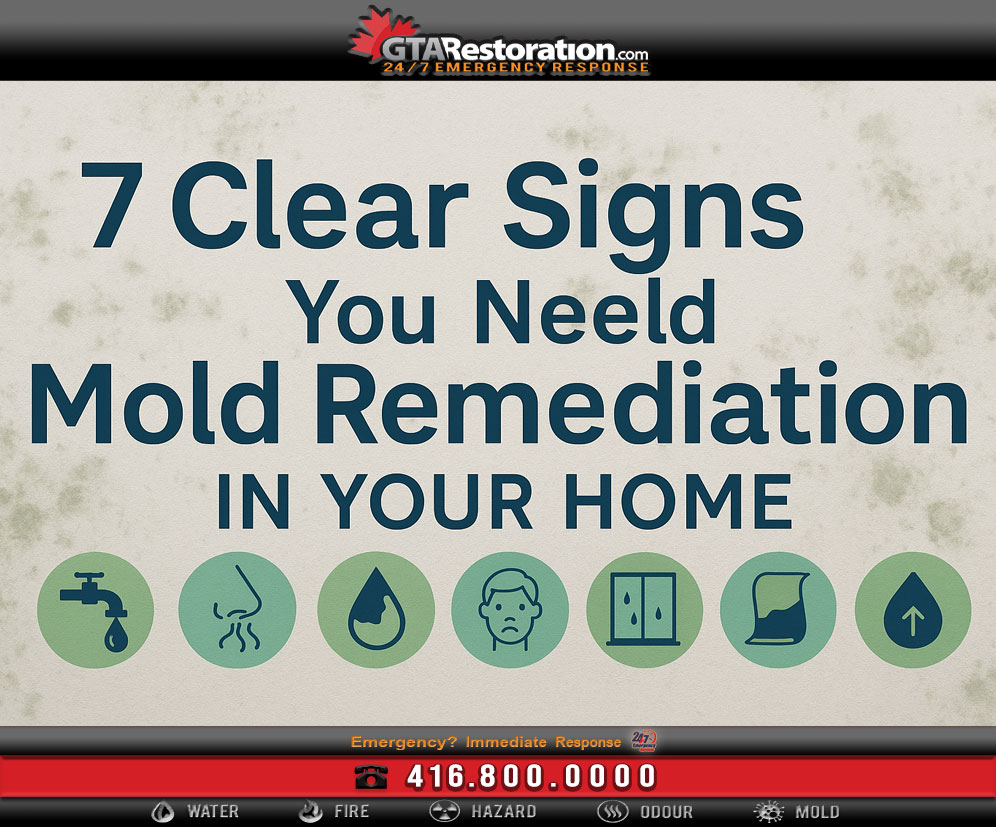
7 Clear Signs You Need Mold Remediation in Your Home
Mold is more than an unsightly nuisance—it can pose serious health risks, damage your property, and lower your home’s value. Acting early is the key to preventing a small patch from turning into an expensive, widespread infestation. In this SEO-optimized guide, we’ll explore the top seven signs that indicate it’s time to call in professional mold remediation services.
Why Early Mold Remediation Matters
-
Health Risks: Exposure to mold spores can trigger allergies, respiratory problems, and even neurological issues.
-
Property Damage: Mold feeds on organic materials—wood, drywall, insulation—weakening structural integrity.
-
Cost Savings: Addressing mold early costs a fraction of what you’d pay for large-scale removal and repairs.
-
Home Value: A documented mold remediation report reassures buyers and protects resale value.
1. Persistent Musty or Earthy Odors
One of the earliest red flags of hidden mold growth is a lingering, musty smell:
-
Basements & Closets: Poor ventilation traps moisture and odor.
-
Behind Walls: Mold colonies often develop where you can’t see them.
-
Under Carpets & Rugs: Spills and high humidity create perfect mold “hot spots.”
What to do: If airing out your home or using odor-neutralizing products doesn’t help, it’s time for a professional inspection.
2. Visible Discoloration on Walls, Ceilings, or Floors
Spotting odd patches or streaks is a clear sign mold is feeding on surfaces.
-
Green, Black, or Brown Patches: Often found in bathrooms, kitchens, and laundry rooms.
-
White, Fuzzy Growth: Could indicate mildew or early-stage mold.
-
Circular or Irregular Stains: May start small but expand rapidly in damp conditions.
Pro Tip: Even a tiny spot—about the size of a nickel—warrants evaluation. Mold can spread invisibly behind surfaces.
3. Water Damage or History of Leaks
Where water goes, mold soon follows.
-
Roof Leaks: Look for stains on ceilings or along attic joists.
-
Plumbing Issues: Check under sinks, around dishwashers, and near water heaters.
-
Flooding Events: Even after drying, residual moisture can linger in drywall and framing.
Action Step: Any water intrusion—big or small—should trigger an immediate moisture assessment. Professionals use moisture meters and infrared cameras to pinpoint hidden dampness.
4. Allergy-Like Symptoms or Respiratory Issues
Unexplained health problems may be linked to mold exposure.
-
Frequent Sneezing & Coughing: Especially when you’re indoors.
-
Itchy, Watery Eyes: Even without seasonal allergies.
-
Worsening Asthma or Sinusitis: Mold spores aggravate existing respiratory conditions.
Warning: Chronic mold exposure has been linked to more severe conditions, including bronchitis, skin rashes, and fatigue.
5. Condensation & High Humidity Levels
Humidity above 60% creates an ideal environment for mold.
-
Window Condensation: Especially in winter or on single-pane glass.
-
Damp Crawlspaces: Poor ventilation and ground moisture.
-
Steam in Bathrooms & Kitchens: Without adequate exhaust fans, moisture accumulates.
Monitor: Use a hygrometer to track humidity in problem areas. If it’s consistently high, consult a remediation specialist to identify sources and implement dehumidification solutions.
6. Peeling Paint or Wallpaper
When mold grows beneath the surface, it can cause finishes to lift.
-
Blistering Paint: Moisture trapped between mold and the substrate.
-
Bubbling Wallpaper: Indicates moisture intrusion behind the paper.
-
Warped Wood Trim: Swelling and decay from ongoing dampness.
Note: Cosmetic fixes won’t solve the underlying mold issue. Proper remediation involves removing affected materials and treating surfaces with antimicrobial agents.
7. Musty Smell in Your HVAC System
Your heating, ventilation, and air conditioning system can spread mold spores throughout your home.
-
Ductwork Odors: Musty smell from vents even when HVAC is off.
-
Dirty Air Filters: Visible black spots or streaks on filters.
-
Clogged Condensate Pans: Standing water fosters microbial growth.
Tip: Schedule regular HVAC inspections. If mold is detected, professional cleaning of ducts and coils is essential to prevent recontamination.
DIY vs. Professional Mold Remediation
| Aspect |
DIY Approach |
Professional Remediation |
| Scope of Work |
Small, visible areas |
Hidden mold, extensive infestations |
| Equipment |
Household cleaners, protective gear |
Industrial vacuums, air scrubbers, HVAC cleaning |
| Expertise |
Limited to obvious mold spots |
Certified technicians, industry standards |
| Containment |
Risk of spore spread |
Negative air pressure, containment zones |
| Guarantee |
No warranty |
Often includes warranty and follow-up inspections |
Bottom Line: For mold covering less than 10 square feet and in non-sensitive areas, a DIY clean-up might suffice. Anything larger, or if you experience health issues, always choose a professional mold remediation company.
How to Prevent Mold Growth in the Future
-
Control Indoor Humidity
-
Fix Leaks Promptly
-
Inspect roofs, windows, and plumbing regularly.
-
Replace damaged seals and flashing.
-
Improve Ventilation
-
Use Mold-Resistant Materials
-
Select mold-resistant drywall, paint, and insulation.
-
Opt for moisture-proof backing in bathrooms.
-
Maintain Your HVAC System
When to Call a Mold Remediation Expert
If you notice any of the seven signs listed above—especially persistent odors, extensive discoloration, or health symptoms—it’s time to schedule a professional assessment. A certified mold remediation team will:
Don’t wait until minor spots become major headaches. Contact a trusted mold remediation company today to protect your home, your health, and your investment.
Related Resources
By recognizing the signs you need mold remediation early—and acting swiftly—you can safeguard your family’s health, preserve your home’s value, and avoid costly repairs down the line. Remember: when in doubt, bring in the professionals and breathe easy knowing your home is mold-free.
Need Mold Remediation Emergency in Your Home?
Call Today!
1-800-506-6048
Learn more ↴
Emergency Restoration: Your Guide to Quick & Effective Recovery, Protection Guide, Water Damage Toronto, Toronto Water Damage, Toronto Mold Removal, Toronto Flood Cleanup, GTA Restoration,


